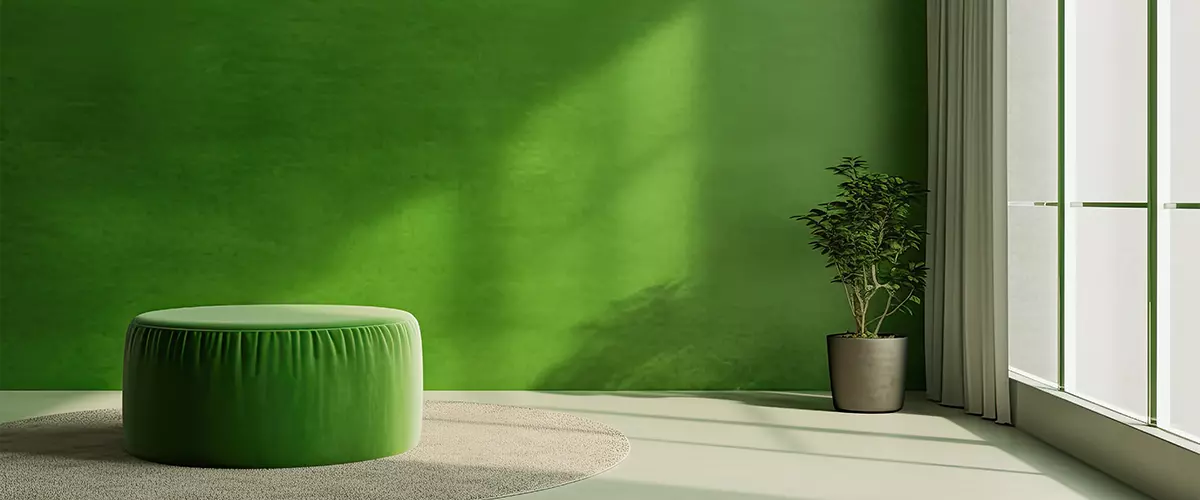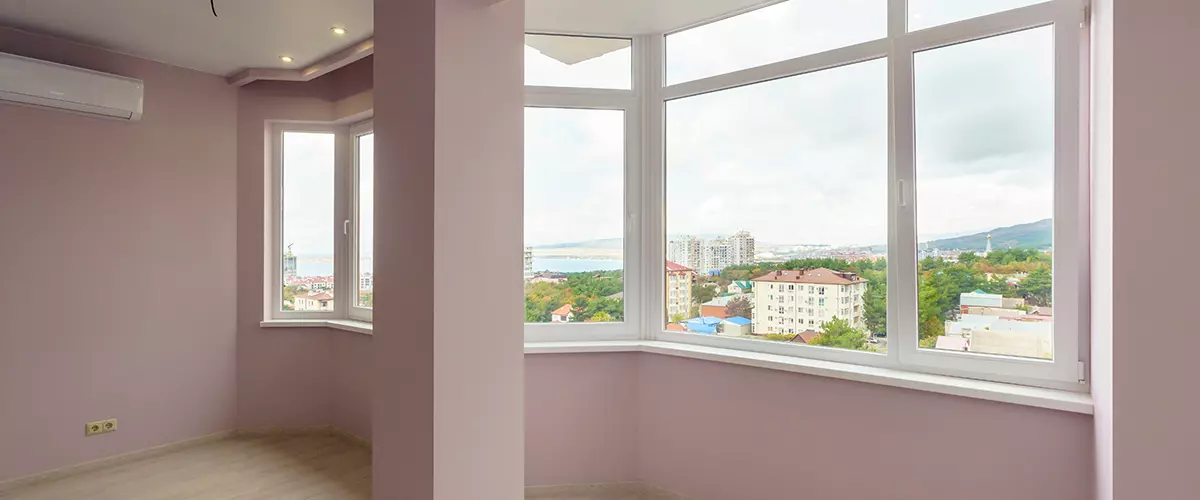Are you trying to differentiate between a top-notch and subpar home painting job? A stunningly finished paint job can dramatically elevate the aesthetics of your house, while poor quality work can become an eyesore.
This article will help you spot the signs of both bad and good painting jobs, empowering you to make informed decisions about your future home improvements.
Let’s get started.

Key Takeaways
- Lack of wall or room preparation is a common sign of a bad painting job, leading to uneven textures and poor-quality appearance.
- Visible stains or flaws, such as dirt or air holes in the paint, indicate subpar surface preparation and application techniques.
- Blotchy, streaky, or blistered paint can significantly detract from the aesthetics of your walls and suggests a poorly executed paint job.
- Cracking, peeling, or wrinkled paint indicates poor adhesion and lack of proper preparation in a bad painting job.
- A good painting job will have a smooth and even finish with no visible brushstrokes or roller marks on the walls.
Common Signs of a Bad Painting Job

No wall or room preparation
Skipping the crucial step of wall or room preparation often signals a bad painting job. Unprepared surfaces may have dirt, dust, oil stains or old paint chips that can affect the quality and finish of new paint layers.
The absence of such prep work typically leads to uneven textures, loose paint adherence, and overall poor-quality appearance.
A professional painter knows the importance of priming walls before starting the actual painting process for maximum durability and aesthetic results.
This fundamental procedure ensures a smooth canvas for your chosen color palette while promoting better adhesion between wall surface and paint layer.
Blotchy, streaky, or blistered paint
Blotchy, streaky, or blistered paint can tarnish the appearance of your walls significantly. These are common signs of a poorly executed painting job that didn’t prioritize surface preparation and quality materials.
Blotchy or uneven colors often result from a lackadaisical application process where different amounts of pressure were applied, leading to inconsistencies in the paint layer thickness.
Streaks might appear if brush strokes overlap in an unsystematic manner without blending them properly.
Blistering is typically due to painting on wet or dirty surfaces, causing trapped moisture underneath that ultimately leads to air pockets or bubbles forming under the paint layer – another key indicator of a below-average paint job.
Visible stains or flaws
Cracking, peeling, or wrinkled paint
Cracking, peeling, or wrinkled paint is one of the telltale signs of a bad painting job. When you notice cracks forming in the paint or areas where it’s starting to peel away from the surface, it indicates poor adhesion and lack of proper preparation.
This can be caused by applying paint on dirty or wet walls, not using a primer, or not allowing sufficient drying time between coats. Wrinkles in the paint are often caused by improper application techniques such as overloading the brush or roller with too much paint.
These imperfections not only make your walls look unsightly but also indicate low-quality workmanship that may require costly repairs down the line. An experienced painter will ensure smooth and even application with no signs of cracking, peeling, or wrinkling for a professional-looking finish that lasts.
Common Signs of a Good Painting Job
A good painting job will leave your walls with a smooth and even finish, free of any visible imperfections or flaws. The surfaces will be properly prepared, ensuring long-lasting durability and no signs of cracking, peeling, or blistered paint.
If you want to know more about the key indicators of a high-quality paint job, keep reading!

Smooth and even finish
A smooth and even finish is one of the key signs of a good painting job. When you walk into a freshly painted room, you expect to see walls that are flawlessly coated with paint.
A high-quality paint job will have a uniform appearance across all surfaces, without any patches or inconsistencies.
The paint should adhere evenly to the walls, creating a seamless and polished look. Not only does this enhance the overall aesthetic appeal of the space, but it also indicates that proper techniques were utilized during the painting process.
So if you notice that your newly painted walls have no visible brushstrokes, roller marks or uneven areas, then it’s likely that you’ve received an excellent interior or exterior paint job.
No visible imperfections
A good painting job should leave no room for visible imperfections or flaws. When you walk into a freshly painted space, your eyes should be met with a smooth and even finish. There shouldn’t be any noticeable streaks, blotches, or inconsistencies in the color application.
A high-quality paint job will have been executed with precision and attention to detail, ensuring that every inch of the surface is flawlessly coated. Whether it’s an interior or exterior paint job, the absence of any visible imperfections is a clear sign of craftsmanship and professionalism.
It’s important to look closely at the walls and surfaces after a painting project to ensure that there are no sagging areas, drip marks, or other signs of poor execution. A well-done paint job will leave you with flawless walls that enhance the overall aesthetics of your space.
Properly prepared surfaces
To achieve a good painting job, it’s crucial to have properly prepared surfaces. This means ensuring that the walls are clean and free from any dust, dirt, or grease before applying paint.
Additionally, any existing imperfections such as cracks or holes should be repaired and sanded down to create a smooth surface. Properly preparing surfaces also involves using primer on bare walls to improve paint adhesion and provide an even base for color application.
By taking the time to prepare surfaces correctly, you can ensure a professional-looking finish that will last longer and resist wear and tear over time.
Long-lasting & durable paint
A sign of a good painting job is the use of long-lasting and durable paint. When you invest in a professional paint job, you expect the results to stand the test of time. High-quality paints are designed to resist fading, cracking, peeling, and other wear and tear that can occur over time.
By using durable paints, professional painters ensure that your walls will retain their color vibrancy and overall appearance for years to come. This not only enhances the aesthetic appeal but also saves you money by extending the lifespan of your paint job.
So when choosing a painter or assessing the quality of a previous paint job, be sure to look for signs of long-lasting and durable paint that will keep your space looking fresh and beautiful for an extended period.
Conclusion
Recognizing the common signs of bad and good painting jobs can save you time, money, and frustration. A bad paint job will have visible flaws, streaks, or peeling paint, while a good paint job will feature smooth surfaces with no imperfections.
Remember to prioritize proper preparation before painting to ensure a long-lasting and visually appealing result.
Here at Bernardo’s Painting, we take pride in our craftsmanship. We’re an award winning company that delivers top-quality painting jobs all over Honolulu County, HI.
If you want to work with us on your upcoming painting job, give us a ring at (808) 384 0864 or request a free quote here!

